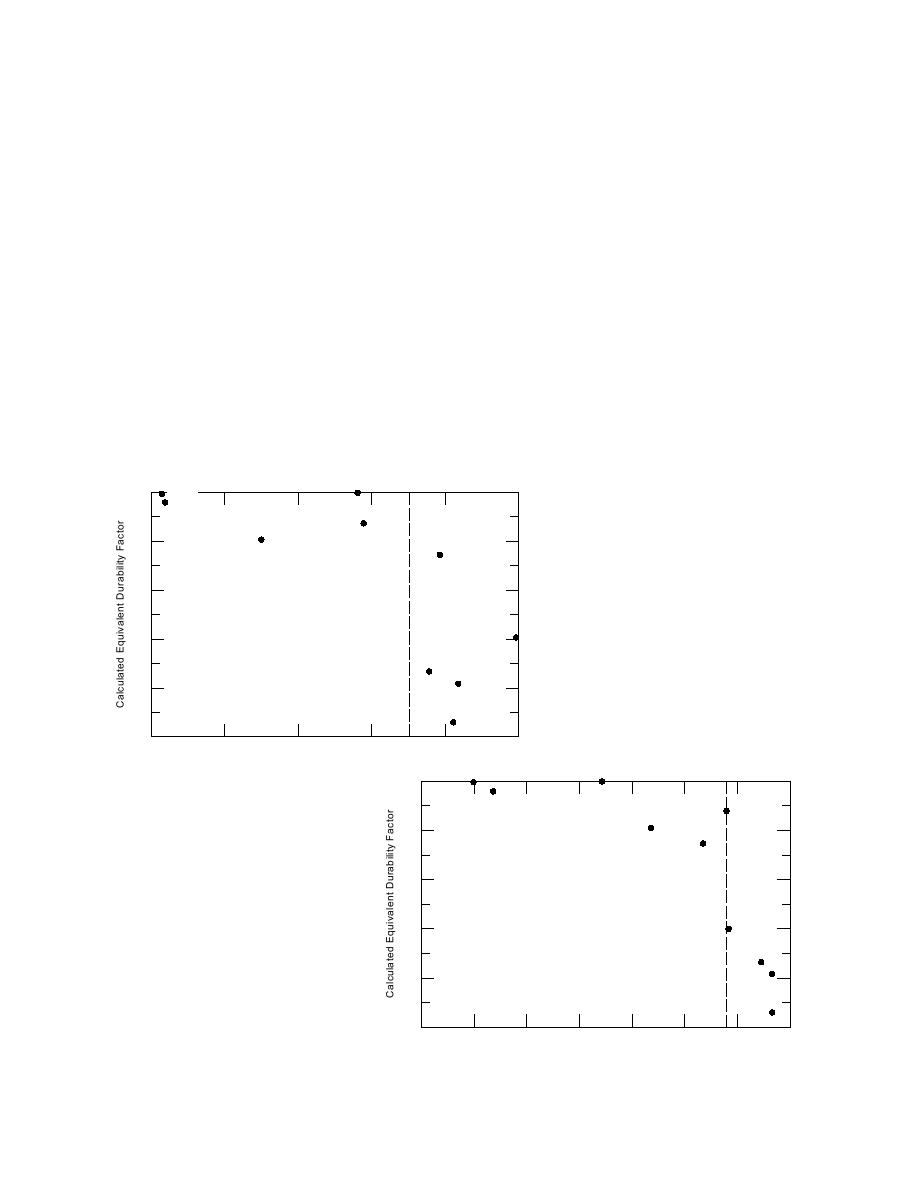
es in them decreases to the point where pores
durable in the conventional test and they show up
become too small for water to freeze at all. Large
as having the coarsest pore structure, i.e., the high-
pores tend not to fill with water, so freezing is not a
est intrusion volume, in Figure 4.
problem in them. Thus, there should be an upper
From the foregoing discussion, we propose that
and lower size range beyond which durability is not
an improved freezethaw test might employ the
affected. Mindess and Young (1981) indicate that
cryogenic test to screen out frost-susceptible aggre-
water will not freeze in 0.01-m pores until the
gates and use the pore size measurement technique
temperature drops to 5C and in 0.0035-m pores
to identify aggregates containing favorable pore-
until 20C. Further, Neville (1981) shows that, in
size distributions from those aggregates passing
cement gel possessing pores smaller than 0.001-m,
the cryogenic test. However, in light of the limited
ice cannot form until 78C. On the basis of this
testing in this study, we consider the proposed test
unsuitable for immediate application to all aggre-
information and under the assumption that the
gate types without further work to determine ex-
migration of water between pores is not a factor,
actly how the internal pore structures of aggregates
which it may be, it seems that pores smaller than
0.0035 m should not affect durability as water in
affect freezethaw performance.
To take the importance of pore size one step
them will not freeze at ordinary winter tempera-
further, the literature suggests that certain pore size
tures.
ranges are more critical than others to freezethaw
Intrusion values for each aggregate sample were
resistance. This is partly because, as pores become
separated into several groupings to see if there was
smaller, the temperature at which pore water freez-
a "critical" pore range affecting durability. In sort-
100
4204
3704
4130
4205
80
3632
3666
60
3595
40
4206
20
3791
3593
0
40
50
60
70
90
80
Volume in Pores between 0.01 and 5 m Diameter (%)
100
4204
3704
4130
4205
3632
80
3666
60
3595
40
4206
20
3791
b. Less than 1-m pore diameter.
3593
0
30
40
50
60
70
80
90
100
Volume in Pores < 1 m Diameter (%)
Figure 5. MDOT durability factor vs. percentage of pore volume.
9



 Previous Page
Previous Page
